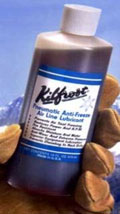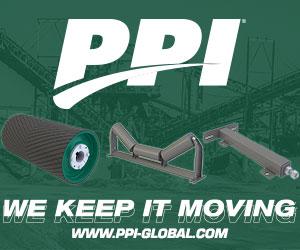

Water gets into the pneumatic system. Because it is winter and the temperature is dropping below freezing (32°F/0°C), ice is forming; which can mess up expensive equipment very badly.
There’s a better way to handle cold conditions on your equipment. It’s called Kilfrost®. This pneumatic tool anti-freeze lubricant (an aqueous mono ethylene glycol mixture containing lubricity and wear additives) absorbs the water in the air, depressing the freezing point of the solution formed, thus eliminating freezing. And thus eliminating freezing problems with pneumatic tools in the winter.


By using Kilfrost pneumatic tool antifreeze lubricant, you can prevent freezing caused by the formation of ice in and around exhaust ports and valves.
Kilfrost will absorb up to four times its own weight of water. As with all air line oils, when working in confined spaces, it is essential that adequate ventilation is provided.
Kilfrost is not an additive. It is a semi-synthetic lubricant which has none of the drawbacks associated with normal oils. Kilfrost is economical. It works by forming a high film strength structure on working surfaces and is not wastefully dissipated by being blown out of exhaust ports. It is an excellent extreme pressure lubricant.
Kilfrost is also the only true antifreeze airline lubricant which will not damage polycarbonate bowls or polyurethane or buna seals.
Kilfrost is recommended for air controls, control valves, impact wrenches, rock crushers, airless paint sprayers, cutters, jackhammers, scalers, air motors, deburring tools, nibblers, sanders, buffers, drills, nut runners, shears, chamfering tools, excavators, polishers, tampers, chippers, grinders, riveting tools, chisels, hacksaws and rock drills.
IBT stocks Kilfrost in pints and gallon containers. Other sizes, including 55 gallon barrels, are available on request.
Lubricate before your tools freeze up! Contact IBT Fluid Power to learn more or to order Kilfrost Pneumatic Tool Antifreeze.
Tips For Air Tools:
- Use Kilfrost, the only lubricant with a guarantee against freezing in compressed air tools. It is not an additive and must not be mixed with other oils.
- Keep your tools in a clean, dry place.
- Make sure the air is as clean and dry as possible.
- Always blow hoses before they are connected to the tools so that dirt, ice and condensed water are not carried into the tools by the air.
- Always check for leaks in pipes, couplings and valves.
- If not fitted with automatic drain valves, remember to blow off your filters regularly to reduce the amount of moisture entering the tool.
- Moist air in cold weather causes freezing in the tools. Don’t use alcohol, diesel oil, paraffin or similar products to prevent freezing. They destroy the oil film in the tools, thereby increasing wear. Don’t heat the tools on an open fire or with a blow torch; you will cause permanent damage to the tools.
- Always use a lubricator and take care of it. Never let it get empty.
- Remember to regulate the lubricator. Too little lubrication increases maintenance and replacement costs. Take special care of the lubrication of a new tool. To assess correct lubrication, the hand may be held in front of the exhaust. The oil content in the air should be such that your hand is oily without being sticky. Feel that the tool’s shank is oily when changing steels.
- If your retaining spring breaks or is loose, the inner parts will get excessive wear. Loose nuts must be tightened up at once.
- Blow hoses and tools clean with compressed air at the end of the day or if they have to be sent to the workshop for repair.
- Send tools to the workshop after about every 8 weeks of use for cleaning, lubricating, even if they appear to be in good working order.




